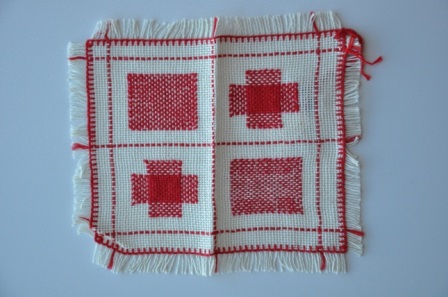Diligence, usefulness and quality. Education ideal of the Female Industrial School from 1875 to 1960
DOI:
https://doi.org/10.7577/formakademisk.532Keywords:
formation ideal, education, craft, art, diligence, benefit, quality, skillAbstract
This article focuses on the educational institution Department of Art, Design and Drama at Oslo and Akershus University College of Applied Sciences’ first phase from 1875 to about 1960. Written sources about the history and art and design education, as well as specific objects from an exhibition in 2010, are tied together to provide a picture of the educational institution's purpose and discipline. Education was initially tied more to business and industry through crafts and handicrafts than to the school system. When handicrafts were established as school subjects, the subject area was justified in new ways with an emphasis on utility and skill. For decades, the education system emphasized the criteria of the crafts as Norwegian, beautiful and of high quality. Around 1920, one sees influences from the international art movements and art educational flow. This article discusses the formation ideal which is linked to the skill area; diligence and benefit, skill and patience. At the end of the article, the copying method, which characterized the teaching in previous time is connected to views in our time and thus given positive aspects.

Downloads
Published
How to Cite
Issue
Section
License
Copyright (c) 2013 Randi Veiteberg Kvellestad

This work is licensed under a Creative Commons Attribution-NoDerivatives 4.0 International License.
Authors who publish with this journal agree to the following terms:
- Authors retain copyright and grant the journal right of first publication with the work simultaneously licensed under a Creative Commons Attribution 4.0 License that allows others to share the work with an acknowledgement of the work's authorship and initial publication in this journal.
- Authors are able to enter into separate, additional contractual arrangements for the non-exclusive distribution of the journal's published version of the work (e.g., post it to an institutional repository or publish it in a book), with an acknowledgement of its initial publication in this journal.
- Authors are permitted and encouraged to post their work online (e.g., in institutional repositories or on their website) prior to and during the submission process, as it can lead to productive exchanges, as well as earlier and greater citation of published work (See The Effect of Open Access).
- The author(s) must manage their economic reproduction rights to any third party.
- The journal makes no financial or other compensation for submissions, unless a separate agreement regarding this matter has been made with the author(s).
- The journal is obliged to archive the manuscript (including metadata) in its originally published digital form for at least a suitable amount of time in which the manuscript can be accessed via a long-term archive for digital material, such as in the Norwegian universities’ institutional archives within the framework of the NORA partnership.
The material will be published OpenAccess with a Creative Commons 4.0 License which allows anyone to read, share and adapt the content, even commercially under the licence terms:
This work needs to be appropriately attributed/credited, a link must be provided to the CC-BY 4.0 licence, and changes made need to be indicated in a reasonable manner, but not in any way that suggests that the licensor endorses you or your use.



